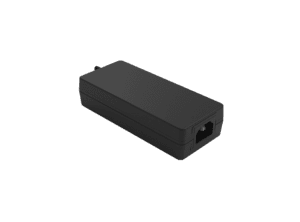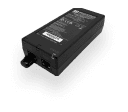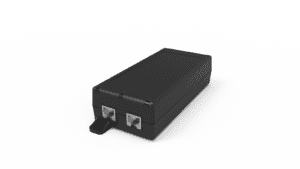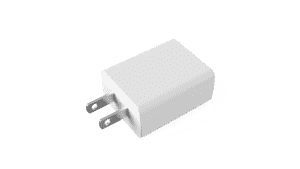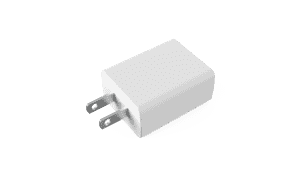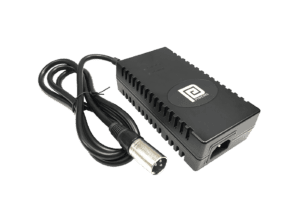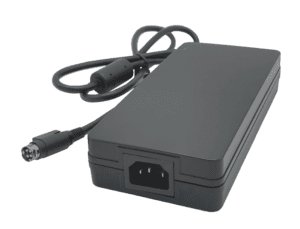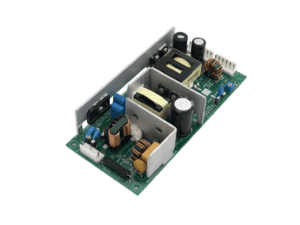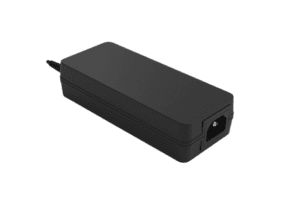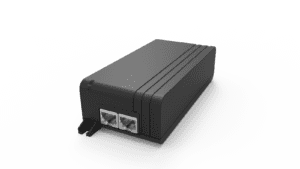BLOG
PoE Compliance: Navigating Safety and Regulatory Considerations for Efficient Network Deployment
Table of contents

Power over Ethernet (PoE) technology has become a cornerstone of modern network infrastructure, enabling the simultaneous transmission of power and data over a single Ethernet cable. While PoE offers numerous advantages in terms of flexibility, cost savings, and ease of deployment, ensuring compliance with safety and regulatory standards is paramount. This article explores the key regulatory standards, safety considerations, best practices, and future trends in PoE compliance.
Understanding PoE Compliance: The Essentials
PoE compliance refers to adhering to the standards and regulations that govern the safe and efficient operation of PoE systems. These standards are designed to ensure that PoE devices and infrastructure operate safely, reliably, and efficiently. Compliance with these standards is essential to avoid potential risks such as electrical hazards, equipment damage, and network downtime.
The Benefits of PoE Compliance
- Enhanced Safety: Following regulatory guidelines ensures the safe functioning of PoE systems, significantly lowering the chances of electrical hazards and protecting equipment from damage.
- Reliable Performance: Adhering to compliance standards boosts PoE systems’ reliability and performance by ensuring consistent power delivery, preventing failures, and maintaining optimal functionality.
- Legal Protection: Compliance with regulatory standards protects businesses from legal liabilities and potential fines, while also minimizing the risk of costly product recalls and lawsuits. It ensures that products meet safety and reliability requirements, allowing access to regulated markets and maintaining consumer trust.
Key Regulatory Standards for PoE Systems
Power over Ethernet (PoE) standards consist of protocols established by the Institute of Electrical and Electronics Engineers (IEEE). There are three PoE standards: IEEE 802.3af, 802.3at, and 802.3bt. These standards outline essential aspects such as power levels, wiring setups, and various technical specifications to facilitate the safe and efficient transmission of power through Ethernet cables. By following these PoE standards, devices from various manufacturers can achieve compatibility and reliability, which fosters broader adoption and seamless interoperability in network environments.
IEEE 802.3 Standards
The IEEE 802.3 standards define the technical specifications for PoE systems, including power levels, voltage ranges, and data transmission requirements. These standards ensure interoperability and compatibility between different PoE devices and infrastructure components.
UL Standards
Underwriters Laboratories (UL) sets safety standards for electrical equipment, including PoE devices. UL certification ensures that PoE equipment meets stringent safety requirements, reducing the risk of electrical hazards and equipment failures.
FCC Regulations
The Federal Communications Commission (FCC) regulates electromagnetic interference (EMI) and radio frequency interference (RFI) in electronic devices. Compliance with FCC regulations ensures that PoE devices do not interfere with other electronic equipment and communication systems.
The Role of Regulatory Standards in PoE Compliance
Certification plays a crucial role in ensuring PoE compliance. Certified equipment meets stringent safety and performance standards, providing assurance of reliability and regulatory adherence. Certifications from recognized bodies to standards such as UL, FCC, and IEEE are essential for PoE equipment.
IEEE Compliance
IEEE compliance ensures that PoE devices meet technical specifications for power delivery and data transmission. IEEE-compliant equipment guarantees compatibility and interoperability with other PoE systems.
UL Certification
UL certification ensures that PoE equipment meets high safety standards. UL-certified devices undergo rigorous testing to verify their safety, reducing the risk of electrical hazards and equipment failures.
FCC Certification
FCC certification ensures that PoE devices comply with regulations governing electromagnetic interference (EMI) and radio frequency interference (RFI). FCC-certified devices minimize interference, ensuring reliable operation.
Benefits of Compliance
- Safety Assurance: Certified equipment meets high safety standards, reducing the risk of electrical hazards.
- Reduced Interference: FCC certification minimizes electromagnetic interference, ensuring reliable device operation.
- Compatibility: IEEE compliance guarantees compatibility and interoperability with other PoE systems.
Best Practices
- Choose Certified Equipment: When considering PoE products, select PoE equipment that is certified to standards such as UL, FCC, and IEEE.
- Verify Certifications: Verify the certifications of PoE devices before deployment to ensure compliance and safety.
- Stay Updated on Certification Standards: Keep up-to-date with changes to certification standards and ensure that PoE systems remain compliant.
Top Safety Considerations for PoE Deployment
Ensuring the safety of PoE deployments involves addressing various factors, including electrical safety, thermal management, and proper installation practices. These considerations are crucial for maintaining the safe and reliable operation of PoE systems.
Electrical Safety
Electrical safety is a primary concern in PoE deployments. Proper insulation, grounding, and protection against electrical surges are essential to prevent electrical hazards and equipment damage.
Thermal Management
PoE devices generate heat during operation, making thermal management a critical safety consideration. Ensuring adequate ventilation and cooling prevents overheating and extends the lifespan of PoE equipment.
Proper Installation Practices
Adhering to proper installation practices, such as using appropriate cable types and ensuring secure connections, is vital for the safe operation of PoE systems. Incorrect installation can lead to electrical hazards and compromised network performance.
The Benefits Considering PoE Deployment Safety Protocols
- Reduced Risk of Electrical Hazards: Implementing electrical safety measures minimizes the risk of electrical shocks and equipment damage.
- Extended Equipment Lifespan: Effective thermal management prevents overheating, extending the lifespan of PoE devices.
- Reliable Operation: Proper installation practices ensure the reliable and safe operation of PoE systems, reducing the likelihood of network downtime.
CLIENT'S QUOTE
Phihong's Power-Over-Ethernet solutions have transformed our network, boosting efficiency and reducing costs. Their seamless integration has simplified both installation and maintenance.
Best Practices for Ensuring PoE Compliance
Implementing best practices for ensuring PoE compliance helps businesses maintain safe and efficient network operations. These practices include regular audits, proper documentation, and continuous training for personnel.
Regular Audits and Inspections
Conducting regular audits and inspections of PoE systems ensures that they meet compliance standards and identify potential issues before they escalate. Audits should include checking for proper insulation, grounding, and adherence to regulatory standards.
Maintain Proper Documentation
Maintaining detailed documentation of PoE installations, including equipment specifications, compliance certificates, and inspection reports, is essential for ensuring compliance and facilitating audits.
Continuous Training for Personnel
Providing continuous training for personnel on the latest compliance standards and best practices ensures that they are knowledgeable about PoE safety and regulatory requirements. Training programs should cover installation practices, safety protocols, and compliance standards.
Benefits to Ensuring Compliance
- Early Issue Detection: Regular audits and inspections help identify potential compliance issues early, preventing major problems.
- Facilitates Audits: Proper documentation makes it easier to conduct internal and external audits, ensuring compliance.
- Knowledgeable Personnel: Continuous training ensures that personnel are up-to-date with the latest compliance standards and best practices.
Impact of Non-Compliance on Network Performance and Safety
Non-compliance with regulatory standards can have significant negative impacts on network performance and safety. Understanding these impacts highlights the importance of adhering to compliance requirements.
Electrical Hazards
Non-compliance with electrical safety standards increases the risk of electrical hazards such as shocks, fires, and equipment damage. These hazards can pose serious risks to personnel and infrastructure.
Network Downtime
Non-compliance can lead to equipment failures and network downtime, disrupting business operations and resulting in financial losses. Ensuring compliance helps maintain reliable network performance.
Legal Liabilities
Non-compliance with regulatory standards can result in legal liabilities, including fines and penalties. Adhering to compliance requirements protects businesses from legal risks and financial repercussions.
Cost Implications of Compliance and Non-Compliance
Compliance with regulatory standards has cost implications for businesses, both in terms of upfront investments and potential savings. Understanding these implications helps businesses make informed decisions about compliance.
Cost of Compliance
Ensuring compliance with regulatory standards involves upfront investments in certified equipment, training programs, and regular audits. While these costs can be significant, they are necessary for maintaining safe and efficient network operations.
Cost of Non-Compliance
Non-compliance with regulatory standards can result in significant financial penalties, legal liabilities, and costs associated with equipment failures and network downtime. These costs often outweigh the investments required for compliance.
Return on Investment
Investing in compliance yields long-term benefits, including enhanced safety, reliable network performance, and protection from legal liabilities. These benefits provide a positive return on investment by reducing operational risks and costs.
Financial Benefits of Compliance
- Long-Term Savings: Investing in compliance reduces the risk of costly equipment failures, legal penalties, and network downtime.
- Enhanced Safety and Reliability: Compliance ensures safe and reliable network operations, minimizing operational risks.
- Positive ROI: The long-term benefits of compliance, including cost savings and risk reduction, provide a positive return on investment.
Best Practices
- Invest in Certified Equipment: Allocate budget for certified PoE equipment and compliance-related expenses.
- Plan for Long-Term Savings: Consider the long-term benefits of compliance, including cost savings and risk reduction, when making investment decisions.
Future Trends in PoE Safety and Regulatory Compliance
As PoE technology continues to evolve, so too will PoE safety and regulatory compliance. Here’s what to look for in future trends in the realm of compliance, to better enhance safety and regulatory standards:
Higher Power PoE Standards
Emerging PoE standards, such as IEEE 802.3bt, support higher power delivery, enabling the use of more powerful devices while maintaining compliance. These standards expand the capabilities of PoE networks.
Integration with Smart Technologies
Integrating PoE systems with smart technologies, such as AI and IoT, enhances monitoring and management capabilities. These technologies improve compliance by providing real-time insights and automated control.
Benefits of Upcoming Safety and Regulatory Compliance Measures
- Expanded Capabilities: Higher power PoE standards support more powerful devices while maintaining compliance.
- Enhanced Monitoring and Management: Integrating smart technologies improves compliance through real-time insights and automated control.

Contact Our Team Today!
Our dedicated sales team and international partners are prepared to support you with your latest projects and initiatives globally.
Explore More with Phihong USA
As we conclude our exploration of PoE technology, it’s clear that this field is experiencing unprecedented growth. For over 50 years, Phihong has been at the forefront of innovation, serving Fortune 500 companies across various industries as a leading power supply manufacturer for OEMs.
Phihong’s leadership, particularly in advanced technologies like Power over Ethernet, extends to active contributions in the development of IEEE PoE standards. This involvement underscores our commitment to innovation and dedication to providing cutting-edge power solutions that will shape the future of technology.
In addition to custom power supply solutions, Phihong offers a diverse range of products, including:
- Power over Ethernet (PoE) Solutions: PoE injectors, splitters, media converters, and more
- AC/DC Adapters and Power Supplies: USB adapters, desktop adapters, industrial-grade power supplies, and more
- Battery Chargers: Chargers for lithium-ion and lead-acid batteries
- Medical Power Supplies: Specialized power supplies that meet stringent healthcare requirements
By partnering with Phihong USA, you are choosing a trailblazer in power technology. If you’re an OEM looking for a custom PoE solution or just looking for a quality product, call us today: 510-445-0100 or email us at usasales@phihongusa.com. We look forward to collaborating with you.
FAQ
Why is PoE compliance important for businesses?
PoE compliance is crucial for businesses as it ensures the safe and efficient operation of network systems. Compliance with regulatory standards minimizes the risk of electrical hazards, equipment failures, and network downtime. Adhering to compliance requirements also protects businesses from legal liabilities and financial penalties associated with non-compliance. By investing in compliance, businesses can enhance the reliability and performance of their PoE systems, ensuring uninterrupted and safe network operations.
What are the key regulatory standards for PoE systems?
The key regulatory standards for PoE systems include IEEE 802.3 standards, UL safety standards, and FCC regulations. IEEE 802.3 standards define the technical specifications for power delivery and data transmission in PoE systems. UL safety standards ensure that PoE equipment meets stringent safety requirements, reducing the risk of electrical hazards. FCC regulations govern electromagnetic interference (EMI) and radio frequency interference (RFI) in PoE devices, ensuring reliable operation and minimal interference with other electronic equipment.
How can businesses ensure compliance with PoE standards?
Businesses can ensure compliance with PoE standards by implementing regular audits, maintaining proper documentation, and providing continuous training for personnel. Regular audits and inspections help identify potential compliance issues early, preventing major problems. Maintaining detailed documentation of PoE installations, including equipment specifications and compliance certificates, facilitates audits and ensures adherence to standards. Continuous training programs keep personnel updated on the latest compliance standards and best practices, ensuring knowledgeable and informed handling of PoE systems.
What are the consequences of non-compliance with PoE standards?
Non-compliance with PoE standards can result in significant negative impacts, including increased risk of electrical hazards, equipment failures, and network downtime. Electrical hazards pose serious risks to personnel and infrastructure, while equipment failures and network downtime disrupt business operations and result in financial losses. Non-compliance can also lead to legal liabilities, including fines and penalties, which can be financially burdensome for businesses. Ensuring compliance with regulatory standards helps mitigate these risks and protect businesses from legal and financial repercussions.
What future trends are expected in PoE compliance?
Future trends in PoE compliance include higher power PoE standards, integration with smart technologies, and a focus on sustainability and energy efficiency. Higher power PoE standards, such as IEEE 802.3bt, support more powerful devices and advanced applications while maintaining compliance. Integrating PoE systems with smart technologies, such as AI and IoT, enhances monitoring and management capabilities, improving compliance through real-time insights and automated control. Emphasizing sustainability and energy efficiency aligns with regulatory standards and reduces the environmental impact of PoE systems, supporting eco-friendly practices and technologies.

